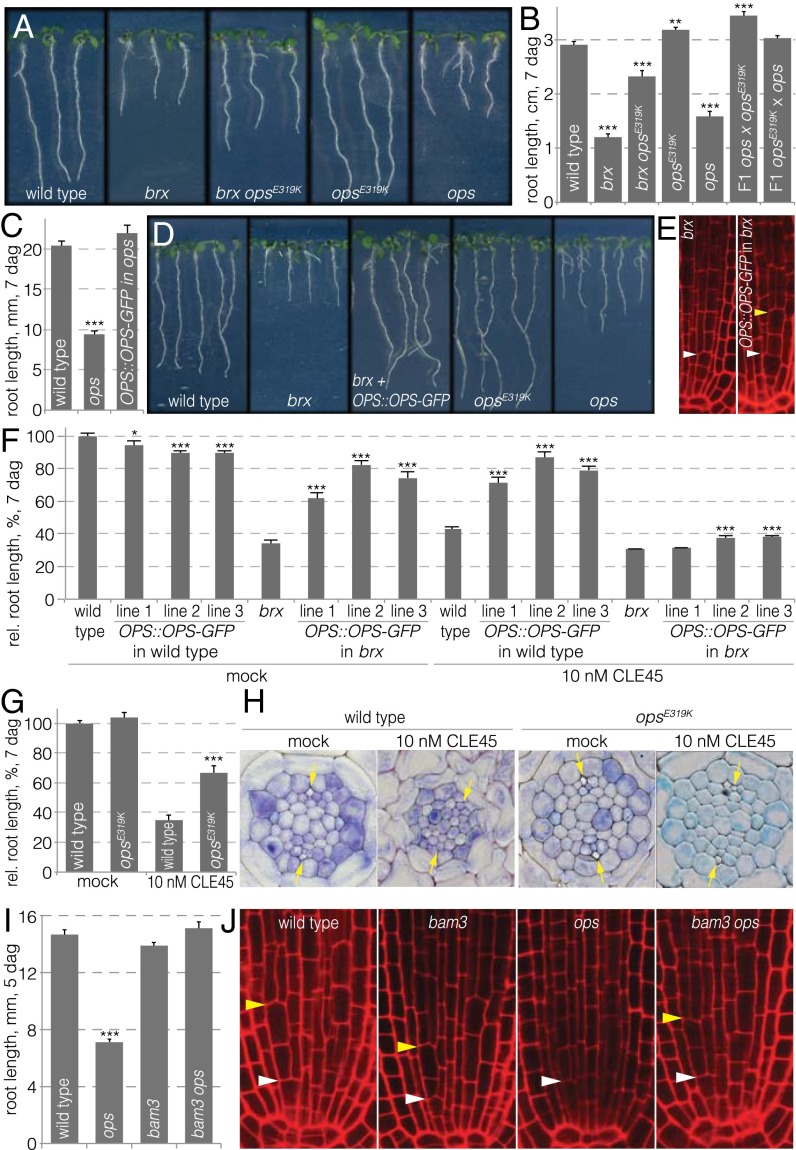Fig. 3.
OPS dosage rescues brx defects and confers CLE45 resistance. (A) Representative 7-d-old seedlings for indicated genotypes. (B) Complementation of ops loss-of-function mutants by the opsE319K gain-of-function allele. (C) Complementation of the ops mutant by an OPS::OPS-GFP transgene. (D) Representative 7-d-old seedlings for indicated genotypes. (E) Restoration of the periclinal sieve element precursor cell division in brx by addition of an OPS::OPS-GFP transgene. (F) Rescue of brx root growth by increased OPS dosage through an OPS::OPS-GFP transgene and CLE45 resistance conferred by increased OPS dosage in wild-type. (G and H) CLE45 resistance conferred by the opsE319K gain-of-function allele, as indicated by root growth (G) as well as sieve element precursor division and protophloem differentiation (H). (I) Suppression of ops root growth defects on second-site loss-of-function mutation in bam3, the putative CLE45 receptor. (J) Restoration of the periclinal sieve element precursor division in ops bam3 double mutants. White arrowheads, position of sieve element-procambium precursor periclinal divisions; yellow arrowheads, position of sieve element precursor periclinal divisions. *P < 0.05; **P < 0.01; ***P < 0.001.

